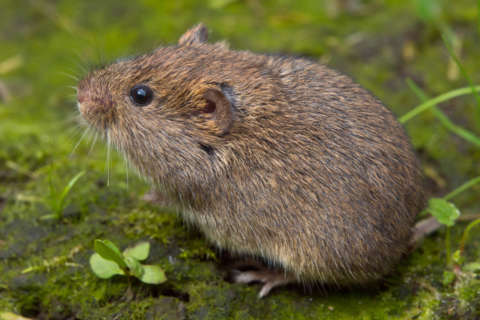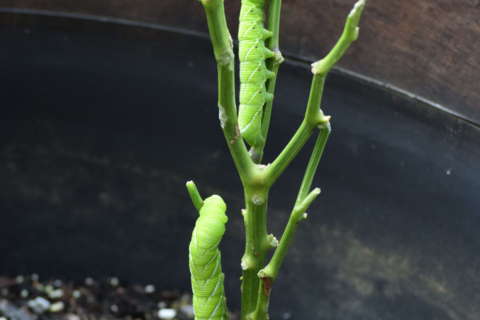A soapy (or oily) leaf bath won’t beat those dirty cucumber beetles
John in Sterling, Virginia, writes: “Arrgghh! I got cucumber beetles in my garden! Would a vegetable soap prevent these beetles from attacking my cucumbers?”
No, John. Washing down plant leaves with horticultural soaps or oils won’t prevent anything. Insecticidal soaps and oils simply smother any insects you hit directly with the spray. (But hitting those pests head-on is nontoxic, highly effective and emotionally satisfying!)
Now — what do you mean by “vegetable soap”? There is a very fine line between a mixture that produces insecticidal soap and one that produces a soap-based herbicide, making homemade soap sprays really risky. My advice is to stick with professionally mixed products.
Oh, and if you choose a horticultural oil, make sure it’s a light refined vegetable oil-based product specifically labeled for use in the summer. The better-known “dormant oils” are heavy petroleum-based products that are designed for use only in the winter — the “dormant” season.
One natural product that is effective when sprayed on plant leaves is neem, at least the right kind of neem. A natural pesticide isolated from the seeds of a tree native to India, neem comes in two forms. “Insecticidal neem” is a highly effective feeding deterrent that also kills any pests that ignore the hint and try to eat anyway. (Look for products with a high azadirachtin content.)
But insecticidal neem can be hard to find; a different form of distillation that prevents plant disease is much more common on store shelves. If you can find the right kind of neem (it will be labeled for use on insects as well as disease), use it. Otherwise, aim your soaps and oils directly at the pests.
Are your beetles striped or spotted?
There are two main types of these pests wreaking havoc in area gardens, John: striped and spotted. The striped ones have already laid eggs that have hatched into grubs underground, and those grubs are now adding insult to injury by eating the roots of your poor plants.
One nontoxic remedy is beneficial nematodes. These microscopic predators are typically mail-ordered, although you can sometimes find them for sale at larger independent garden centers. They come packed by the millions in a little sponge. You drop the sponge into a watering can and water them into the soil (ideally, soil you have previously soaked) around your cukes early in the evening — not in the morning or the heat of the day. The ravenous nematodes will work their way down into the dirt to parasitize your grubs while harming nothing else.
The grubs of the spotted cuke beetle don’t spend nearly as much time in the soil, making nematodes less effective. So call in the toads if you’re seeing spots!
Toads eat the beetles
Cucumber beetles are tough pests. Both the striped and spotted cuke beetle transmit plant diseases as they feed on your pickles-to-be, so it’s important to take action as soon as you see them.
Use a Dust Buster or canister vacuum to suck the pests off the plants; and/or spray the beetles directly with a light horticultural oil designed for use in the summer or a professionally made insecticidal soap.
And encourage toads to take up residence nearby — they’re the only creatures known to eat the bitter-tasting beetles, and every toad will eat its own weight in insect pests every evening. To make them feel at home in your garden, sink a birdbath saucer into the ground near the affected plants and freshen up the water every few days. Your toads will also need a damp shady space to hide in during the day; a heavy board propped up on a stack of bricks under some big shrubs makes a great toad abode.
Remember that these creatures are nocturnal, so you may not see your toads at work. But “if you build it, they will come,” and research shows that they love to eat the beetles!
Encore azaleas: Still waiting for the first act!
Paula over in Indian Head, Maryland, writes: “I bought two Encore azaleas which I planted in containers just before Mother’s Day this year. They did not have any blooms when I bought them and still have not bloomed. I thought they were supposed to bloom three times a year! They have new growth, but it does not look like any buds have set either. Can you help?”
More like “reassure,” Paula. Newly purchased shrubs weren’t grown on a normal timeline, and it can often take a season or so for them to get acclimated to physical reality. Your best bet at getting the first flowers next spring is to get them out of those containers and plant them in the ground. The odds are that they won’t survive a cold winter with their roots above ground in a pot.
‘Time, gentlemen: Pruners down!’
Paula’s azaleas remind me that we are overdue for our annual fall pruning warning.
Spring blooming shrubs like azaleas, rhododendrons and forsythia have already begun to display the buds that will produce next spring’s flowers, and pruning them now runs the risk of eliminating most (or all) of next year’s blooms. The best time to prune such plants is right after their flowers fade in the spring.
Now, if the plants are really overgrown and you don’t care about next year’s flowers, you can remove a third of each plant this month without doing any long-term harm — but no more than one-third.
And don’t prune anything after mid-September, when pruning could expose the plants to winter injury.
Mike McGrath was Editor-in-Chief of ORGANIC GARDENING magazine from 1990 through 1997. He has been the host of the nationally syndicated Public Radio show “You Bet Your Garden” since 1998 and Garden Editor for WTOP since 1999. Send him your garden or pest control questions at MikeMcG@PTD.net.







